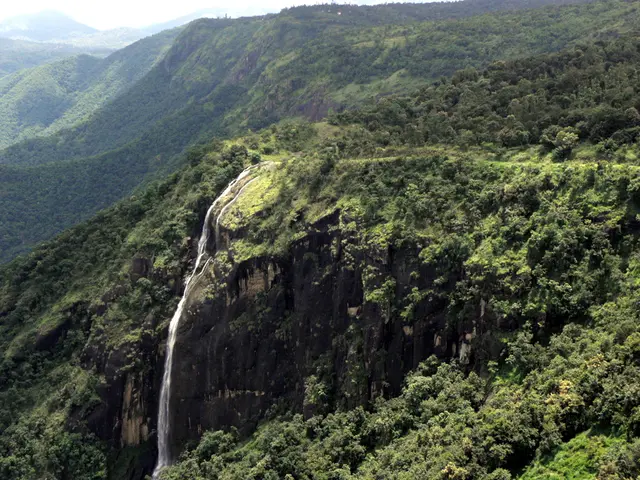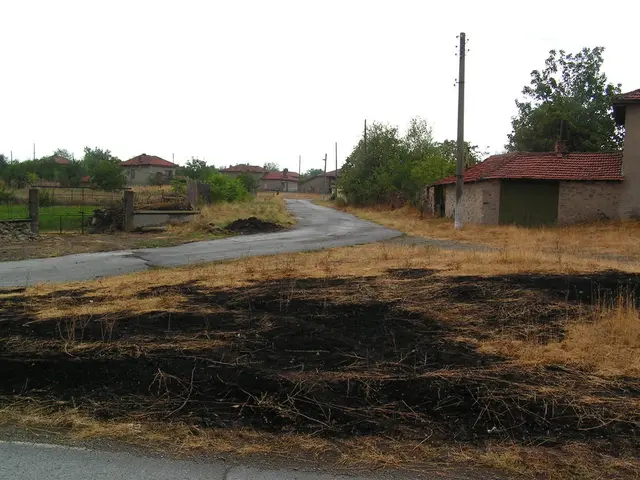Exploits in Ceylon Unveil Age-old Sapphires
In the heart of South Asia, the island nation of Sri Lanka has been a beacon for precious gems since ancient times. This tropical paradise, once known as Ceylon, has been a significant source of corundum minerals – rubies and sapphires – for centuries.
Evidence of Sri Lanka's gem trade extends as far back as the Old Testament, with the earliest reference to the island being the origin for the valuable gems given by Middle Eastern King Solomon to the Queen of Sheba. The Thousand and One Nights, an ancient Iraqi oral tradition, also featured tales of Sinbad the Sailor, who was shipwrecked on Sri Lanka, where rivers flowed with rubies, diamonds, pearls, and 'many precious things'.
Historical trade artifacts provide evidence of Sri Lanka's long-standing prominence in the gem trade. Medieval artifacts bearing sapphires traced chemically to Sri Lanka have been discovered, demonstrating the island's role in the historic gem trade that reached as far as Central Europe via ancient trade routes through Aleppo and Constantinople.
Sri Lanka's sapphires are renowned worldwide, with famous gems like the Logan Sapphire and the Star of India originating from its mines. The island's gem deposits are primarily found in alluvial deposits, which have been exploited over centuries.
Archaeological sites in Sri Lanka have yielded evidence of gem mining dating back thousands of years, with river deposits around Ratnapura (City of Gems) being particularly famous for rich sapphire and ruby discoveries. The chemical composition and trace elements in ancient sapphires found in medieval European jewelry consistently link these stones to Sri Lankan origins, providing archaeological proof of early gem mining and trade.
Both rubies and sapphires are varieties of corundum. Rubies are defined by their red color caused by chromium traces, while sapphires encompass various colors, including blue, yellow, and even rare purples found in Sri Lanka. The island has traditionally been an important source for both rubies and sapphires, alongside other historic ruby sources like Myanmar and Thailand.
The early sources in Sri Lanka contributed significantly to the gem markets of Asia and Europe, indicating sophisticated trade networks and mining techniques. The island remains prominent in gemology due to its classic metamorphic sapphire deposits, often valued for their brilliance and natural color, which are highly prized in the gem market.
Sri Lanka has balanced tradition with continual development, incorporating cutting-edge technologies and international trade while maintaining local sustainable practices. The traditional cutting and polishing practices in Sri Lanka have remained almost unchanged, with some techniques dating back to a gem-carving drill depicted on a Mediterranean Roman gem-engraver's tomb from the first century AD.
Traditional heat-treatment methods for improving the color of rubies, such as burying them within or under bonfires, are still practiced in Sri Lanka. These methods are reminiscent of accounts by medieval Arabic polymaths Al-Biruni and Teifashi.
Despite the allure of large-scale mining giants, Sri Lanka has chosen to prioritize its long-term future for the country and its people. The country has successfully resisted such giants, positioning itself as a true Island of Gems. The visitor experienced the continuation of millennia-old mining practices in Sri Lanka, specifically river panning for alluvial deposits and shaft mining for secondary placers.
The island was known by the Greeks and Romans as Tabropane, Persian as Serendib, and more recently under British rule as Ceylon. In recent times, the island's rich history and continuing significance in the gem trade have attracted tourists, positioning it as a true Island of Gems. The successful growth of tourism in Sri Lanka has been a testament to its enduring allure, blending natural beauty with a rich cultural heritage.
- The island's historical significance as a source of gemmology extends beyond ancient texts, with evidence of membership in global trade networks reaching as far back as medieval Europe.
- Periodic workshops and courses organized by local organizations aim to share the science behind gemology, attracting both lifestyle enthusiasts and finance-focused individuals interested in investing in international gem markets.
- Travelers visiting Sri Lanka can now complement their sightseeing with visits to technological advancements in gem mining and processing, showcasing the country's commitment to modernization while preserving its rich heritage.
- Sports fans and enthusiasts can engage in traditional games and pastimes played by ancient gem miners, promoting cultural exchange and preserving the island's sports history.
- To maintain the sustainability of Sri Lanka's precious gem resources, the government has implemented strict regulations for mining and export, ensuring that the traveler's gemmology experience contributes to the island's vibrant future.




